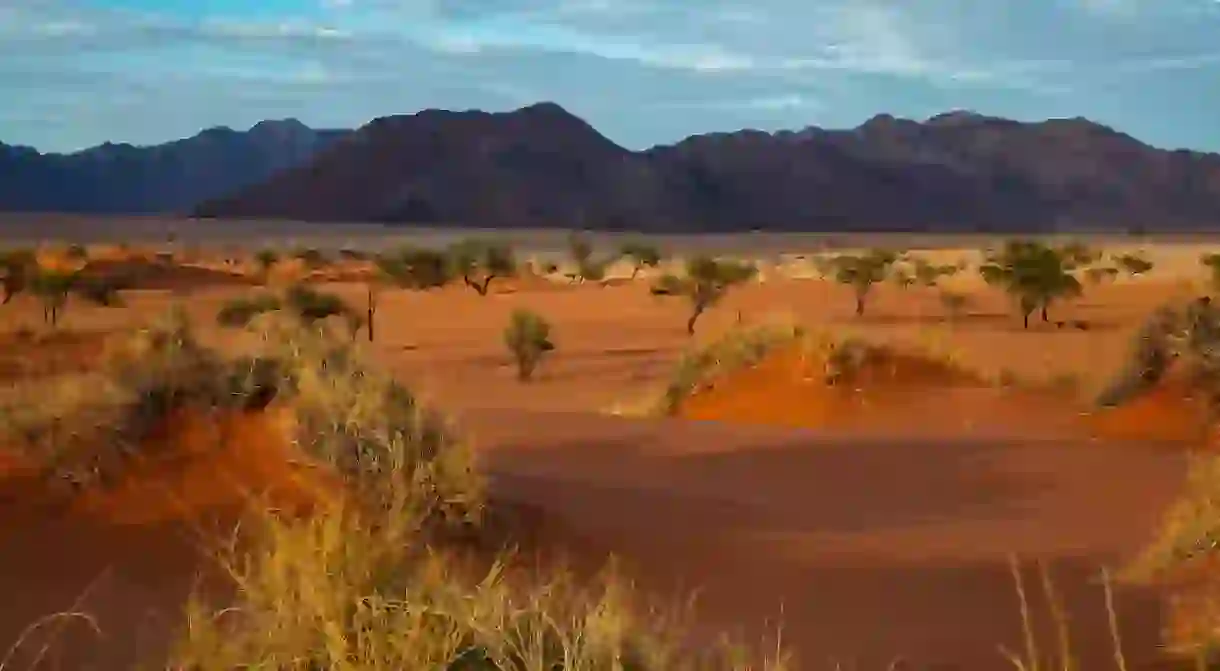A Guide to Namibia's Prehistoric Sites

Namibia’s fascinating prehistoric sites can be found across the length and breadth of the country, offering visitors a unique historical perspective. If you’re planning a trip and want to know where to visit, check out our need-to-know guide.
Did you know – Culture Trip now does bookable, small-group trips? Pick from authentic, immersive Epic Trips, compact and action-packed Mini Trips and sparkling, expansive Sailing Trips.
The White Lady
Archaeological site
Situated on a small rock overhang on the highest peak in Namibia, the White Lady is an ancient rock art with a fascinating history. A truly unique rock painting by Namibia’s prehistoric San population, Brandberg mountain’s White Lady rock art caused quite the confusion amongst archeologists who were at odds with what expected the painting depicted. The painting is said to date back 2,000 years, and is one of the most fascinating things to see along the Brandberg mountain range. To see the White Lady, visitors are required to register at the entrance to the Tsisab Valley where an official guide proceeds to give a tour. Tours are booked well in advance at the Daureb Mountain Guides’ office in Uis.
Hoba Meteorite
Archaeological site, Natural Feature
This is believed to be the biggest meteorite ever found on earth. Weighing an astonishing 50 tonnes, the meteor landed about 80,000 years ago some 20 km (12.4 miles) west of the city of Grootfontein in northern Namibia. This Namibian national monument is estimated to be between 200 and 400 million years old, and is made up of iron (82%) and nickel (16%) with some trace elements. Named after the Hoba farm in the Otavi mountain where it’s situated, this monument is a huge attraction for local and international tourists who flock to Grootfontein to see this piece of the galaxy for themselves.
Mirabib Rock
Archaeological site

Walking among the fossilised acacia trees and gazing upon ancient San shelters surrounding the Mirabib Rock will take you back to a simpler time in a space that is quiet, calm, and empty. Situated near Rostock Farm close to the coastal town of Walvis Bay, this ancient site features in Stanley Kubrick’s acclaimed film 2001: A Space Odyssey. The Mirabib Rock is an inselberg in the Namib Desert which rises from the middle of a desert plane. It’s a great place to visit to discover the history and culture of the San people.
Apollo 11 Cave
Archaeological site
Dating back an astounding 27,000 years, the rock art around the Apollo 11 cave is considered to be the oldest examples of ancient art in Africa and one of the earliest examples worldwide. The cave is situated in the southwestern part of Namibia, approximately 250 km (160 miles) southwest of Keetmanshoop. The stone slab drawings in the cave are estimated to have been created up to 25,300 years ago. It was named after the Apollo 11 spaceship in July 1969, by German archeologist Wolfgang Wendt, team leader on the excavation site. Famous for containing some of the oldest ‘mobiliary’ or moveable art ever found on the continent, the Apollo 11 cave is home to seven small stone slabs decorated with charcoal and ochre images of animals.
Petrified Forest
Natural Feature
Declared a national monument in 1950, The Petrified Forest dates back over 260 million years. A tour to the area yields an array of exciting things to see, including spotting the Welwitschia Mirabilis, a plant that can live for hundreds of years and exists only in Namibia. Although not technically a forest in the traditional sense, it is home to huge fossilised trees that date back to prehistoric times, and is located 42 km (26 miles) west of Khorixas, a small town in the Kunene Region. These trees were formed when their trunks were washed down a river and deposited in alluvial sands. The sand turned into sandstone and all remaining liquid turned to acid, which fossilised the wood and transformed it into stone.
Dinosaur footprints at Farm Otjihaenamaparero
Archaeological site

Imagine walking in the same place where, thousands of years ago, dinosaurs once roamed. This is exactly what happens when you visit Farm Otjihaenamaparero, where you can find 190-million-year-old dinosaur tracks. At a time when the Earth’s climate was cooler, prehistoric animals roamed this national monument situated between the village of Kalkveld and the town of Grootfontein. When the climate became drier, the creatures fled – all that’s left of their presence are the huge footprints which today attract curious tourists and archeology-lovers.













